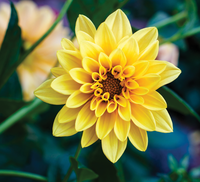Sharp Contrast
In macro photography, multiple images are merged together in order to generate a single picture. Under Linux, the enfuse tool performs this task. An alternative approach is to use GIMP, which lets you merge images manually, an approach that brings with it additional possibilities.







